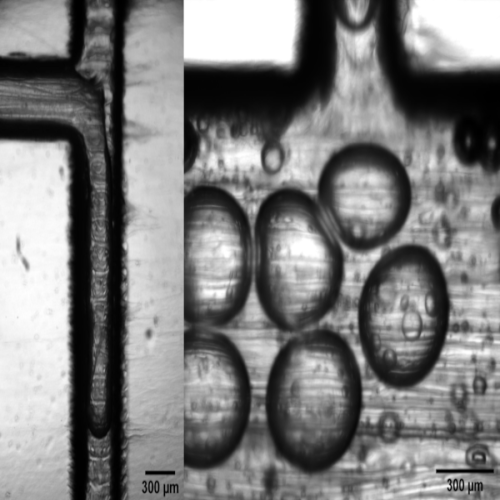Matter Assembly Computation Lab
CU Boulder, College of Engineering

We build functional objects from multiple materials using state of the art additive manufacturing processes. The vision is that robots and other electromechanical systems are ready to use when you remove them from the printer. To do this, we are developing algorithms to verify that a particular multimaterial design will actually be printable, even if it includes some materials that are stiff as epoxy and others that flow like water. We develop our own multimaterial 3D printers, and we also use two commercial inkjet printers, capable of depositing up to 8 different material types in a 3D object.
3D Printed Microfluidics
We explore 3D printing of microfluidics to enable customizability, multi-material, and rapid prototyping. The ability to 3D print microfluidics allows realization of fully 3D channel geometries and structures previously infeasible through conventional 2.5D soft lithography approaches.
Liquid-Solid Co-Printing (printing with liquids and solids):

Here we present an actuator with an integrated print-in-place strain sensor which is produced entirely via multi-material additive manufacturing and requires no post processing or manual fabrication steps. Automatically manufacturing these sensor-actuator systems enables more complex, capable, and integrate-able designs, because the labor of assembly is eliminated; actuator-sensor designs that would be tedious or impossible to manufacture become tractable with our approach. See more details here, or see the whole paper here.

Multi-Phase Four Channel Printer (M4CP)
As the capability of designing and utilizing multiple materials used within additive manufacturing processes develops, it has become clear that various types of printers each have niche specialties. We are combining two of these printing processes to leverage each of their benefits, we are using an FDM framework and adapting it to coextrude liquids through a syringe pump. This allows for diverse combinations of the printing processes such as hydraulic actuators or more conductive electrical conduits.

BitBlox - Printable Electromechanical Modules
Printing large-scale electromechanical parts from raw materials is not currently feasible because state of the art printers and inks yield large transistors with low performance. Instead, electromechanical assemblies can be built, automatically, from small heterogeneous modules: BitBlox. BitBlox are small, modular, interconnecting blocks that embed simple electromechanical connectivity and functionality. They can be automatically placed by a 3D printer. Not all blocks are identical; instead the unique combinations and positions of BitBlox within an assembly determine the mechanical and electrical properties of the assembly. BitBlox can be used to build recyclable electrical circuits and robots.

Printable Programmable Viscoelastics
This work demonstrates a new method for 3D printing viscoelastic materials with specified material properties. This method allows arbitrary net-shape material geometries to be rapidly fabricated and
enables continuously varying (yet fully-specified) material properties throughout the finished part. This new ability allows robot designers to tailor the properties of viscoelastic damping materials in order to reduce impact forces and isolate vibrations.

Printed Hydraulics
This work introduces a novel technique for fabricating functional robots using 3D printers. Simultaneously depositing photopolymers and a non-curing liquid allows complex, pre-filled fluidic channels to be fabricated. This new printing capability enables complex hydraulically actuated robots and robotic components to be automatically built, with no assembly required.
